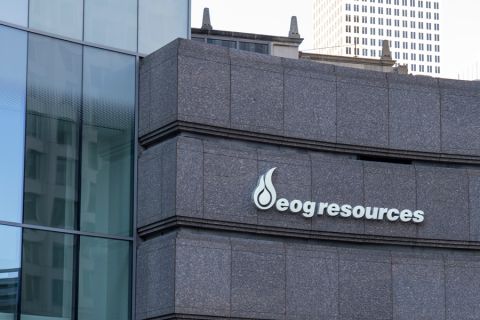Alberta’s oil sands comprise one of the world’s largest sources of bitumen. The Alberta deposits are known to hold more than 170 Bbbl of recoverable oil. The Alberta Energy Utilities Board estimated that 82% of the total bitumen ultimately recoverable will be produced through in situ techniques.
Steam-assisted gravity drainage (SAGD) has emerged as the preferred recovery method with producing temperatures up to 250°C (482°F).
In 2011 electric submersible pumps (ESPs) were selected as the artificial lift method for an operator’s first SAGD project. The preliminary ESP design involved using systems rated to 218°C (424°F) which, at that time, were considered state-of-the-art. However, as these systems would be operating close to the temperature limit, there was potential for early system failure and reduced production levels. For the project to be a success, higher rated equipment to maximize well performance and ESP run-life would be required. After further investigation and evaluation the team decided to field-trial the newly developed REDA HotlineSA3 third-generation high-temperature ESP system for steam-assisted applications, which is rated to 250°C (482°F) well operating temperature.
Artificial lift in SAGD
SAGD involves horizontal drilling of two wells, one above the other, with typically 5 m (16 ft) of vertical separation. Steam is then pumped into the upper (injector) well to heat the bitumen and reduce its viscosity. Through gravity drainage the resultant emulsion of oil and water can be produced to surface via the lower (producer) well.
In its simplest form the steam pressure provides sufficient reservoir pressure so that the fluid can flow to surface naturally. Unfortunately, the effectiveness of this process is dependent upon several factors such as reservoir depth and thief zones where the required reservoir pressure cannot be achieved. Additionally, the steam-oil ratio (SOR) has a significant impact on the efficiency and economics of the SAGD process, and natural lift production has generally been replaced by artificial lift techniques that can effectively lower SORs.
Gas lift was initially the most common form of artificial lift technique used to produce SAGD wells. Known as the “poor boy” gas-lift method, it was first installed in SAGD wells due to its simple completion design and ability to work at high reservoir temperatures.
Challenges for gas lift lie mainly with the requirement of a reservoir pressure typically of 290 psi or above, which may be difficult to achieve operationally or economically through high SORs. It also can be difficult to operate the wells. For example, it may take days for production rates to stabilize following a shutdown, resulting in lost production and time-consuming well operations.
The introduction of the Hotline550 system in 2003 increased the ESP working temperature of 218°C and immediately provided operators with an alternative to gas lift. The success of this system encouraged operators to push the operating envelope of ESPs in SAGD further and, subsequently, the development of ESP systems capable of working with higher operating temperatures while providing reliability and functionality.
New high-temperature ESP technology
The REDA HotlineSA3 features the first step-change in ESP design by incorporating a new integrated motor configuration. The new architecture of the internal motor is a complete rearrangement of traditional ESP design. Unlike conventional ESP systems, the seal section of the integrated motor, often referred to as the protector, is split in two. The shaft sealing functions are maintained on top of the motor section within the shaft seal module (SSM), while the motor oil compensation and pressure equalization functions are moved below the motor. The SSM, motor and compensator, and sensor portal comprise the integrated motor function.
The short shaft sealing sections are stacked on top of the motor to add redundancy and layers of protection, thereby enhancing motor reliability. The shorter SSM increases tolerance to dogleg severity, which can be substantial in SAGD wells. When operating in high dogleg severity, components of the ESP – shafts, flanges, bolts, and bearings – are subjected to mechanical stresses that can be detrimental to the ESP and ultimately reduce run life. The SSM also includes filters for the prevention of damage to sealing components and ceramic bearings for high load capacity to handle abrasives. With the compensator located at the bottom of the motor configuration, the pressure equalization and abrasives are isolated from the delicate components of the SSM.
To further improve reliability of the REDA HotlineSA3 ESP, all nonmetallic components were reassessed and upgraded to withstand the new temperature ratings of 250°C well temperatures and 300°C (572°F) internal motor temperatures. O-rings, motor insulation, motor oil, and radial and thrust bearings were all upgraded.
The integrated motor also includes a prefilled plug-in concept, which reduces the potential for human error during system installation. Motor oil is prefilled at the factory or service center, eliminating the need for refilling at the well site. The prefilling process uses ultra-purified motor oil that provides increased insulation and reliability. The plug-in pothead design has a positive pressure system and a dual elastomeric seal to prevent fluids from escaping and entering the motor while the connection to the power cable is completed.
Finally, to improve ESP performance and provide the opportunity for well optimization, a sensor portal was included within the system. This provides measurement of internal motor temperature and annulus pressure and temperature. The internal motor sensor, rated to 343°C (649°F), is now one of the most valuable protection systems for the high-temperature ESP as it provides an early indication of changing production or operating conditions such as low flow, which, if undetected, can result in costly component failure. The pressure and temperature sensor is generally used for accurate steam sub-cool measurement, providing the ability to optimize production performance and steam chamber maintenance.
Increased production
The completion of a two-year period since the first installation of the HotlineSA3 ESP system for field trials provided sufficient time to evaluate these new ESP systems. The ability to operate up to 250°C allowed target production rates to be achieved and exceeded. Higher operating temperatures lead to better heat transfer and lower sub-cool which, in turn, translates into increased production. The new system also enabled the operator to run the ESP under a wider range of flow, pressure, and temperature conditions, providing more operational flexibility.
Additionally, the unique integrated motor architecture improved ESP reliability, resulting in fewer change-outs and leading to reduced lifting costs and expenses. Early results are very encouraging, and a step-change in ESP runlife has been achieved. Mean time to failure from the first units installed has been calculated to exceed 1,300 days, showing improved reliability of more than 50%. Following the successful trial the operator has confirmed the use of the HotlineSA3 ESP system in all subsequent change-outs and new pads.
Recommended Reading
The One Where EOG’s Stock Tanked
2024-02-23 - A rare earnings miss pushed the wildcatter’s stock down as much as 6%, while larger and smaller peers’ share prices were mostly unchanged. One analyst asked if EOG is like Narcissus.
EOG Resources Wildcatting Veteran Billy Helms to Retire
2024-04-02 - Joining an EOG Resources predecessor in 1981, Helms is among the pre-1986-oil-bust generation who later found success in shale.
Kimmeridge Fast Forwards on SilverBow with Takeover Bid
2024-03-13 - Investment firm Kimmeridge Energy Management, which first asked for additional SilverBow Resources board seats, has followed up with a buyout offer. A deal would make a nearly 1 Bcfe/d Eagle Ford pureplay.
E&P Earnings Season Proves Up Stronger Efficiencies, Profits
2024-04-04 - The 2024 outlook for E&Ps largely surprises to the upside with conservative budgets and steady volumes.
Uinta Basin: 50% More Oil for Twice the Proppant
2024-03-06 - The higher-intensity completions are costing an average of 35% fewer dollars spent per barrel of oil equivalent of output, Crescent Energy told investors and analysts on March 5.





